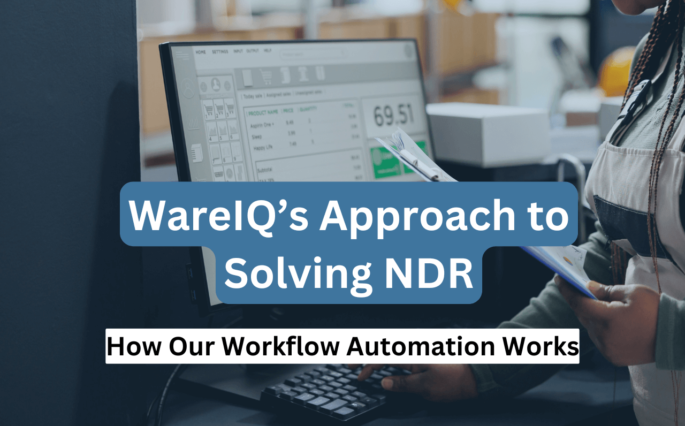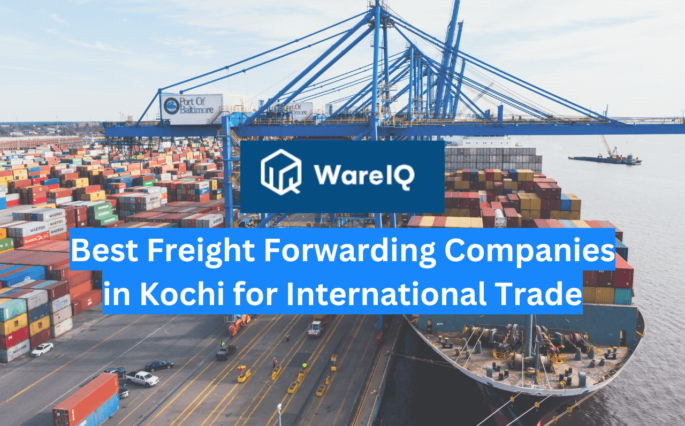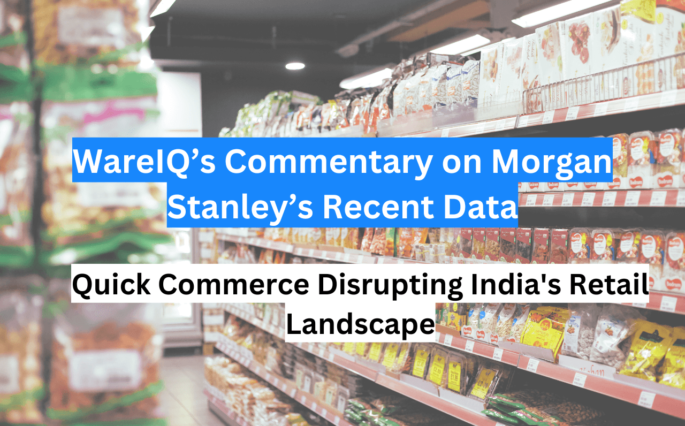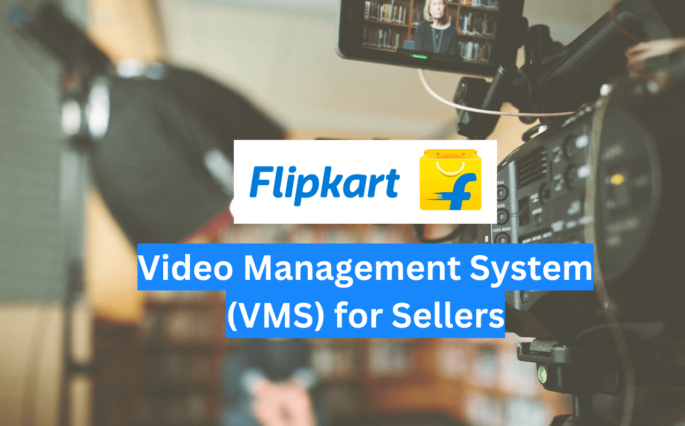Best Freight Forwarding Companies in Kochi for International Trade
Kochi, a bustling port city on India's southwestern coast, is rapidly emerging as a pivotal logistics hub, particularly for international trade. The Indian logistics market is projected to grow at a compound annual growth rate (CAGR) of 8.3%, reaching an estimated value of $650.52 billion by 2028. This growth is significantly influenced by the increasing demand for efficient freight forwarding services, making it essential for businesses to partner with reliable freight forwarding companies in Kochi.In this article, we will explore the best freight forwarding companies in Kochi that cater to the diverse needs of businesses engaged in international trade. From customs clearance to multimodal transportation, these companies offer services that ensure seamless logistics operations. Discover how these providers can enhance supply chain efficiency and support business growth in today's competitive market.Overview of the Freight Forwarding IndustryCurrent LandscapeThe freight forwarding industry is experiencing significant growth, driven by globalisation and the increasing complexity of international trade. As businesses expand their operations beyond domestic borders, the demand for efficient logistics solutions has surged. The global freight forwarding market was valued at approximately $200.98 billion in 2022 and is projected to grow at a compound annual growth rate (CAGR) of 4.6%, reaching around $724.17 billion by 2029. This growth is largely fueled by the rise of e-commerce, which has transformed consumer expectations for rapid and reliable delivery services.Key Drivers of GrowthSeveral factors are contributing to the expansion of the freight forwarding sector:Global Trade Expansion: Increased international trade volumes require skilled logistics management to navigate complex supply chains.E-commerce Boom: The rapid growth of online retail has intensified the need for seamless cross-border shipping and last-mile delivery solutions.Technological Advancements: Innovations such as AI, blockchain, and cloud computing are enhancing operational efficiency and transparency within the industry.Challenges Facing the IndustryDespite its growth potential, the freight forwarding industry faces several challenges:Infrastructure Limitations: Congested ports and outdated customs procedures can introduce inefficiencies and additional costs.Geopolitical Uncertainties: Trade conflicts and political instability may disrupt supply chains and complicate logistics operations.High Operating Costs: Persistently high fuel prices can strain profit margins for freight forwarders operating on thin margins.Role of Freight Forwarding Companies in KochiIn Kochi, freight forwarding companies play a crucial role in facilitating international trade by managing the complexities involved in logistics. These companies provide essential services such as customs clearance, warehousing, and multimodal transportation, ensuring that goods move efficiently from manufacturers to consumers. As Kochi continues to develop its infrastructure and enhance its connectivity, these firms are well-positioned to support businesses looking to expand their reach in global markets.The freight forwarding industry is poised for continued growth, driven by globalisation, technological advancements, and the rising demand for efficient logistics solutions. For businesses in Kochi looking to engage in international trade, partnering with reliable freight forwarding companies is essential for navigating this complex landscape.Key Services Offered by Freight Forwarding CompaniesFreight forwarding companies are critical in facilitating international trade by providing essential services. These services help businesses navigate the complexities of logistics, ensuring that goods are transported efficiently and in compliance with regulations. Below are the key services offered by freight forwarding companies in Kochi.1. Customs ClearanceCustoms clearance is one of the most important services provided by freight forwarders. It involves preparing and submitting the necessary documentation to ensure that goods can enter or exit a country without delays. This process includes:Documentation Preparation: Freight forwarders handle all required documents, such as commercial invoices, packing lists, and bills of lading, ensuring accuracy to avoid costly delays.Regulatory Compliance: They stay updated on the latest customs regulations and tariffs, helping businesses navigate complex legal requirements.Tax and Duty Payments: Freight forwarders manage paying any applicable duties and taxes to expedite the clearance process.2. Transportation ManagementFreight forwarding companies coordinate the movement of goods across various modes of transport, including:Multimodal Transport: They arrange for shipments via air, sea, or land, depending on cost and delivery time requirements.Carrier Selection: Freight forwarders build relationships with trusted carriers to negotiate favourable rates and ensure reliable service.Shipment Tracking: They provide real-time updates on shipment status, allowing businesses to monitor their goods throughout transportation.3. Warehousing SolutionsMany freight forwarding companies offer warehousing services to help businesses manage their inventory effectively:Storage Facilities: Warehouses provide safe storage for goods before they are shipped or after they arrive at their destination.Inventory Management: Freight forwarders often assist with inventory tracking and management, ensuring businesses can efficiently handle stock levels.4. Cargo InsuranceTo mitigate risks associated with international shipping, freight forwarders typically offer cargo insurance services:Risk Assessment: They help businesses assess potential risks related to their shipments and recommend appropriate insurance coverage.Claims Assistance: In case of damage or loss during transit, freight forwarders assist clients in filing claims with insurance providers.5. Packing and LoadingProper packing is crucial for preventing damage during transit:Packing Services: Freight forwarders ensure that goods are packed securely according to international shipping standards.Loading Supervision: They oversee the loading process to ensure cargo is handled correctly and stowed efficiently in containers.The array of services provided by freight forwarding companies in Kochi is designed to simplify the logistics process for businesses engaged in international trade. By leveraging these services, companies can enhance their supply chain efficiency, reduce operational risks, and focus on their core business activities.Also check : 10 Best Cargo Companies in IndiaTop 10 Freight Forwarding Companies in KochiKochi is a vital logistics hub in India, hosting numerous freight forwarding companies that cater to the growing demands of international trade. Below is an in-depth look at some of Kochi's top freight forwarding companies, detailing their services, strengths, and contributions to the logistics landscape.1. DHL GlobalSource: www.dhl.comDHL is a global logistics and express shipping leader renowned for its extensive network and innovative solutions.Services Offered:Air Freight: Fast and reliable air transport for urgent shipments.Ocean Freight: Comprehensive sea freight services for bulk shipments.Road and Rail Transport: Efficient land transport solutions across India.Customs Clearance: Expert in handling documentation and compliance.Warehousing Solutions: State-of-the-art facilities for inventory management.Strengths:Global Reach: With operations in over 220 countries, DHL ensures seamless business connectivity.Sustainability Initiatives: Committed to reducing carbon footprints through eco-friendly practices.2. KWE IndiaSource : www.kwe.com/local/india/en/about/A subsidiary of Kintetsu World Express from Japan, KWE India is recognised for its high service standards and customer-centric approach.Services Offered:Freight Forwarding: Comprehensive solutions across air, sea, and land.Cargo Insurance: Protection against potential losses during transit.Packaging Services: Customized packaging solutions to ensure safe delivery.Strengths:Quality Assurance: Strong focus on maintaining high service quality.Local Expertise: In-depth knowledge of Indian customs regulations and procedures.3. Agility LogisticsSource: www.agility.com/en/Agility Logistics has carved out a niche in providing tailored logistics solutions across various sectors.Services Offered:Multimodal Freight Options: Flexible transport solutions combining different modes.Specialised Services: Expertise in healthcare, automotive, and consumer goods sectors.Strengths:Industry Knowledge: Deep understanding of specific industry requirements enhances service delivery.Technology Integration: Use of advanced technology for tracking and managing shipments.4. DB SchenkerSource: www.dbschenker.com/globalDB Schenker, A prominent global logistics player, offers integrated supply chain solutions tailored to client needs.Services Offered:Multimodal Services: Comprehensive logistics solutions combining air, sea, and land transport.Event Logistics: Specialised services for managing logistics for events and exhibitions.Strengths:Sustainability Focus: Commitment to reducing environmental impact through innovative practices.Global Network: Extensive reach across continents ensures reliable service.5. FedExSource: www.fedex.comFedEx is synonymous with express shipping and logistics services, offering various solutions tailored to business needs.Services Offered:Customs Clearance Services: Efficient handling of customs documentation and compliance.Warehousing Facilities: Secure storage options with inventory management systems.Strengths:Brand Reputation: Strong global presence ensures reliability and trustworthiness.Comprehensive Solutions: End-to-end logistics services that cater to various industries.6. Gati-KWESource : www.gati.comGati-KWE is a joint venture between Gati Limited and Kintetsu World Express, focusing on providing robust logistics solutions across India.Services Offered:Freight Forwarding Services: Comprehensive transport solutions across various modes.Specialized Courier Services: Fast delivery options tailored to business needs.Strengths:Local Expertise with Global Standards: Combines local knowledge with international best practices.Innovative Solutions: Focus on technology-driven logistics enhances efficiency.7. MaerskSource: www.maersk.comMaersk is a global leader in container shipping and logistics, offering extensive services tailored to businesses engaged in international trade.Services Offered:Ocean Freight Services: Comprehensive shipping solutions for bulk goods.Supply Chain Management Solutions: Integrated services that enhance operational efficiency.Strengths:Strategic Positioning in Kochi: Facilitates efficient shipping routes across Southeast Asia.Commitment to Innovation: Continuous investment in technology to improve service delivery.8. Yusen LogisticsSource: www.yusen-logistics.com/us_enYusen Logistics specialises in customised logistics solutions tailored to various sectors, including automotive and healthcare.Services Offered:Freight Forwarding Services Across ModesSupply Chain Management SolutionsStrengths:Customer-Centric Approach: Focus on understanding client needs ensures tailored solutions.Global Network: Extensive international reach enhances service capabilities.9. Kerry LogisticsSource: www.kerrylogistics.comKerry Logistics is known for its comprehensive e-commerce logistics solutions designed to meet the needs of online retailers.Services Offered:Freight forwardingLast-mile delivery servicesStrengths:Expertise in e-commerce logistics ensures timely deliveries for online businesses.Strong regional presence allows for efficient operations within Asia.10 Hellmann Worldwide LogisticsSource: www.hellmann.com/enHellmann Worldwide Logistics offers various logistics services tailored to various industries, emphasizing technology-driven solutions.Services Offered:Air freight and sea freight servicesRoad and rail transportation solutionsStrengths:Innovative use of technology simplifies complex logistics requirements.Strong commitment to customer satisfaction enhances service delivery.Kochi's diverse range of freight forwarding companies provides businesses with essential logistics support necessary for successful international trade. By partnering with these reputable firms, companies can enhance their operational efficiency, mitigate risks, and ensure timely deliveries—key factors contributing to sustained growth in today’s competitive market.Related - Top 10 Best Logistics Companies in Kochi for Retailers in 2025Factors to Consider When Choosing a Freight ForwarderSelecting the right freight forwarder is crucial for businesses engaged in international trade. The choice can significantly impact logistics efficiency, cost management, and overall supply chain performance. Here are key factors to consider when evaluating freight forwarding companies in Kochi:1. Experience and ExpertiseIndustry Knowledge: Look for forwarders with experience in your industry to navigate unique challenges effectively.Local Presence: Companies with a local office in Kochi can provide valuable insights into regional regulations and customs processes.2. Reputation and ReliabilityTrack Record: Research the company’s history and client reviews to assess their reliability and service quality.On-Time Delivery: Ensure the forwarder has a proven record of meeting delivery timelines consistently.3. Range of ServicesComprehensive Solutions: Choose a forwarder that offers a wide array of services, including air freight, ocean freight, customs clearance, and warehousing.Flexibility: A versatile provider can adapt to your logistics needs as your business grows.4. Global Network and PartnershipsEstablished Relationships: A strong network of global agents and carriers facilitates smoother international shipments.Access to Resources: Ensure the forwarder has partnerships with reputable carriers and customs brokers to enhance service reliability.5. Technological CapabilitiesTracking Systems: Opt for companies that provide real-time tracking capabilities for better visibility of your shipments.IT Infrastructure: Advanced technology can streamline logistics operations and improve communication.6. Compliance and Regulatory KnowledgeUnderstanding of Regulations: The forwarder should understand international trade laws and customs requirements.Licensing and Certifications: Verify that the company holds the necessary licenses to operate legally in your target markets.7. Customer Service and SupportResponsiveness: Look for a forwarder that prioritises customer service, offering timely responses to queries and concerns.Personalised Service: A dedicated support team can provide tailored solutions based on your logistics needs.8. Crisis Management CapabilitiesProactive Solutions: Choose a forwarder who can swiftly address issues when they arise, minimising disruptions to your supply chain.Insurance Options: Ensure they offer cargo insurance to protect against potential losses during transit.9. Cost StructureTransparent Pricing: Understand the pricing model, including any hidden fees or charges that may apply.Value for Money: While cost is important, prioritise quality service over the lowest price to avoid pitfalls.Choosing the right freight forwarding company in Kochi requires careful consideration of various factors. By evaluating potential partners based on these criteria, businesses can ensure they select a reliable logistics provider that aligns with their operational goals and enhances their international trade capabilities.Related Read : Leading Shipping Companies in KochiConclusionIn the competitive landscape of international trade, partnering with the right freight forwarding company in Kochi is crucial for success. The companies highlighted in this article offer services designed to streamline logistics operations, enhance supply chain efficiency, and ensure regulation compliance. By carefully evaluating these freight forwarding companies in Kochi, businesses can make informed decisions that meet their shipping needs and contribute to their overall growth and competitiveness in the global market.You may also like to check - Best Freight Forwarding Companies in IndiaFAQs About Best Freight Forwarding Companies in KochiWhat services do freight forwarding companies in Kochi offer?Freight forwarding companies in Kochi provide various services, including customs clearance, air and sea freight, warehousing, cargo insurance, and logistics management. These services help businesses streamline their shipping processes and ensure compliance with international regulations.How do I choose the right freight forwarding company in Kochi?When selecting a freight forwarder, consider factors such as their experience in your industry, reputation for reliability, range of services offered, technological capabilities, and customer support. Evaluating these aspects will help you find a partner that meets your logistics needs effectively.Are freight forwarding services expensive?The cost of freight forwarding services can vary based on several factors, including shipment size, destination, and service type. At the same time, comparing prices’s important, prioritising quality and reliability over the lowest cost to ensure efficient logistics operations.How can I track my shipment with a freight forwarder in Kochi?Most reputable freight forwarding companies in Kochi offer real-time tracking systems that allow you to monitor your shipment's status throughout its journey. You can usually access this information through their online platforms or by contacting their customer service.What should I look for regarding customer service from a freight forwarder?Look for a freight forwarder that provides responsive and personalised customer service. They should be available to address your queries promptly and offer solutions tailored to your specific logistics challenges, ensuring smooth communication throughout the shipping process.


![The Advantages of Multi Vendor Marketplace Platforms for Buyers and Vendors [2025]](https://wareiq.com/wp-content/uploads/2024/10/Advantages-of-Multi-Vendor-Marketplace-Platforms-685x426.png)






